Eliz Licata over at GardenRant and Gardening While Intoxicated is curious. She wants to know where I put the 175+ houseplants I have during the winter. Stuart at Blotanical asked if I have a big house. And Ewa (Ewa In the Garden) is amazed.
No, our house isn't big, but neither is it particularly small. It is just right for raising two girls and allowing them to have their own rooms. If you had come for an extended visit during those years, you might have had to sleep on the sofa bed, unless we could get the girls to share a room. Come now, and there are two spare rooms with beds.
About those plants. I went around last night and snapped a few photos to show you where the largest concentration of plants are. Besides the ones you see in these pictures, there are others that are the lone plant in their respective locations. Let's begin with what you would see when you walk in the front door.
Our living room is not a room that we use much at all. Our Christmas tree was in here, so we opened presents here, but we really don't spend any time in this room. There are three windows, facing south and west, so it's a naturally sunny room, just right for plants.
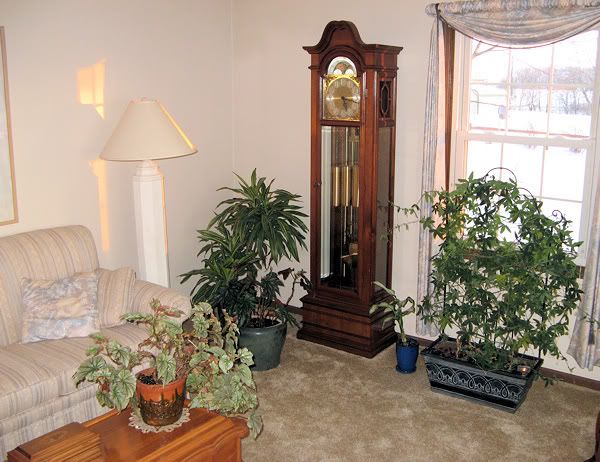 The large vining plant in the window is my Passiflora caerulea 'Clear Sky.' I've had it since May 2005 and it lives on the front porch once it's warm enough to put it outside.
The large vining plant in the window is my Passiflora caerulea 'Clear Sky.' I've had it since May 2005 and it lives on the front porch once it's warm enough to put it outside.
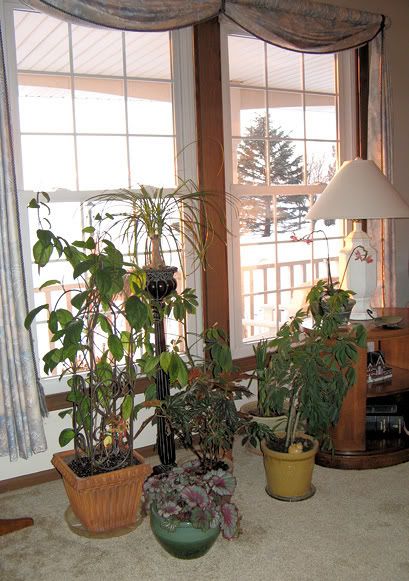 Many plants get moved around the house during winter, depending on their needs. Here we have the vining Clerodendron, which will suffer inside, but quickly recover once it joins the Passiflora on the porch come spring. The Ponytail Palm (Beaucarnea recurvata) will get moved to the other window where the Passiflora is now. A few of these will remain where they are.
Many plants get moved around the house during winter, depending on their needs. Here we have the vining Clerodendron, which will suffer inside, but quickly recover once it joins the Passiflora on the porch come spring. The Ponytail Palm (Beaucarnea recurvata) will get moved to the other window where the Passiflora is now. A few of these will remain where they are.
There are others scattered here and there in this general vicinity - Snake plant by the stairs, Pothos in the entry, orchid on the desk and Norfolk Island Pine beside the desk.
As we walk through the kitchen, you'd notice there is only one plant in either the kitchen proper (a small hanging fern in the window) or the eating area. Not a lot of light here, so not much would do well.
Into the family room and you'll see another group of plants in the south window. The hideous lime green pot is a temporary pot for a Bougainvillea that was in bloom previously. It will be planted in the ground come summer. It's still up here because it seems to be doing well and I don't want to interrupt its "wellness." Otherwise, it would be down in the basement greenhouse with the other one.
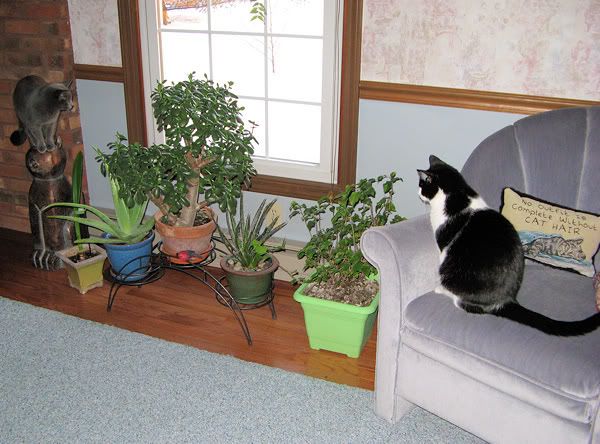 The Jade is the only plant that resides here year round. The others will be outside for the summer, including the Amaryllis on the left. Above these hangs a Hoya.
The Jade is the only plant that resides here year round. The others will be outside for the summer, including the Amaryllis on the left. Above these hangs a Hoya.
 On the other side of the room, there is a plant stand with a Dieffenbachia recently given to me by a co-worker. The Kangaroo Fern (Microsorum pustulatum)hangs over a stairway to the basement, where it has hung since I bought it in 2006. Not shown is another plant - Goldfish Plant (Nematanthus gregarius) - that hangs over the other end of the half-wall, which will go outside for summer.
On the other side of the room, there is a plant stand with a Dieffenbachia recently given to me by a co-worker. The Kangaroo Fern (Microsorum pustulatum)hangs over a stairway to the basement, where it has hung since I bought it in 2006. Not shown is another plant - Goldfish Plant (Nematanthus gregarius) - that hangs over the other end of the half-wall, which will go outside for summer.
On top of the wall unit in this room is a Palm of some sort that the same co-worker gave me. A Brugmansia sits on the floor by a different window.
Just off the kitchen eating area is our utility room, where you'll find another large group of plants huddling around the south window. The Coleus that I brought in for winter just had a pruning a week or so ago. I hope to keep them going until spring when I'll return them to the outside gardens. They were so pretty this past summer.
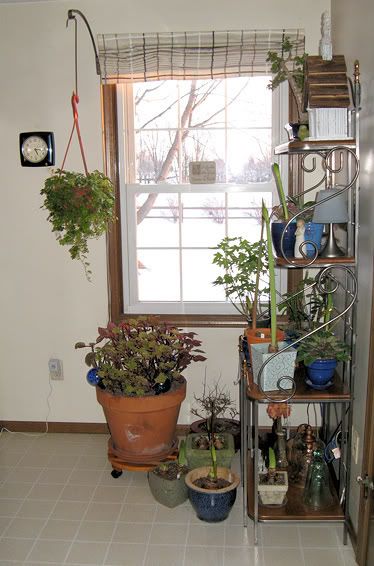 There are many potted Amaryllis here, in various stages of growth. As they bloom, they will be brought into the family room to the coffee table so we can enjoy their blooms. There is also the variegated Abutilon, which will go outside come spring. There are Orchids and African Violets here, too, as well as another Jade. The hanging plant will go outside. This area looks quite different in the summer with fewer plants.
There are many potted Amaryllis here, in various stages of growth. As they bloom, they will be brought into the family room to the coffee table so we can enjoy their blooms. There is also the variegated Abutilon, which will go outside come spring. There are Orchids and African Violets here, too, as well as another Jade. The hanging plant will go outside. This area looks quite different in the summer with fewer plants.
Off the kitchen proper is a formal dining room, which we never use for formal dining. It is a room kind of off by itself and it has a door, which remains closed most of the time, because this has turned into a catch-all room. My desktop computer is in one corner, and the French doors to the patio go unused during the winter, except to provide light for plants.
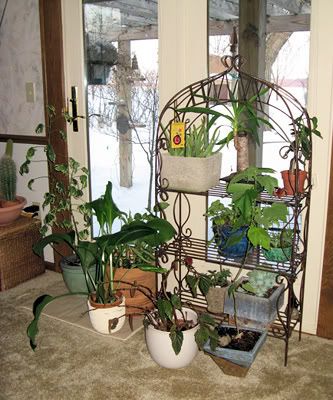 Nearly every one of these plants will go outside in the summer. The plant stand will be used outside for the Orchids, in a mostly shady spot that only gets a small bit of morning sun. They love it there.
Nearly every one of these plants will go outside in the summer. The plant stand will be used outside for the Orchids, in a mostly shady spot that only gets a small bit of morning sun. They love it there.
Next, we go downstairs to the basement greenhouse. In the room that contains the water heater, water softener and sump pump, there are two hanging shop lights with fluorescent bulbs that can be raised or lowered as necessary. Come summer, this area will be plant-free.

Two rooms away is another "greenhouse" with two more shop lights. All the plant lights are on a timer. The Brugmansias overwinter here, as well as the water plants and other outdoor plants. They are on an old single bed frame that isn't used anymore, lined with heavy plastic. This is a storage room that I hope gets a bit cleaned out this summer. Too much stuff!
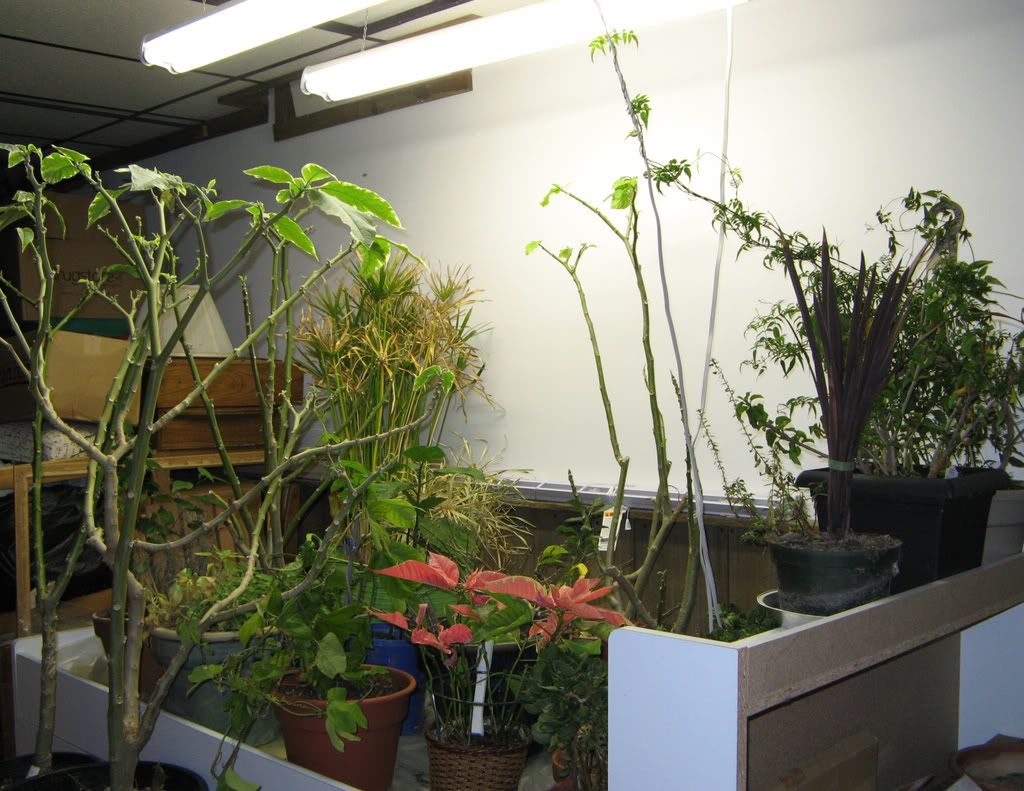
There are a few plants upstairs in the bedrooms and bathroom, but only four total. They reside there year round.
So there you have it!
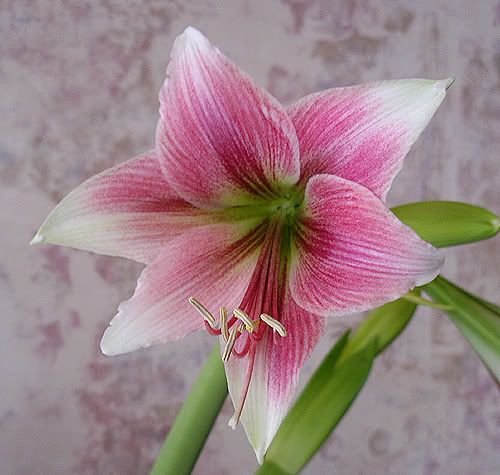 I plant my bulbs in a separate garden for the summer and basically forget about them, except for fertilizing them about once a month. If we've not had a lot of rain, I will water them.
I plant my bulbs in a separate garden for the summer and basically forget about them, except for fertilizing them about once a month. If we've not had a lot of rain, I will water them.









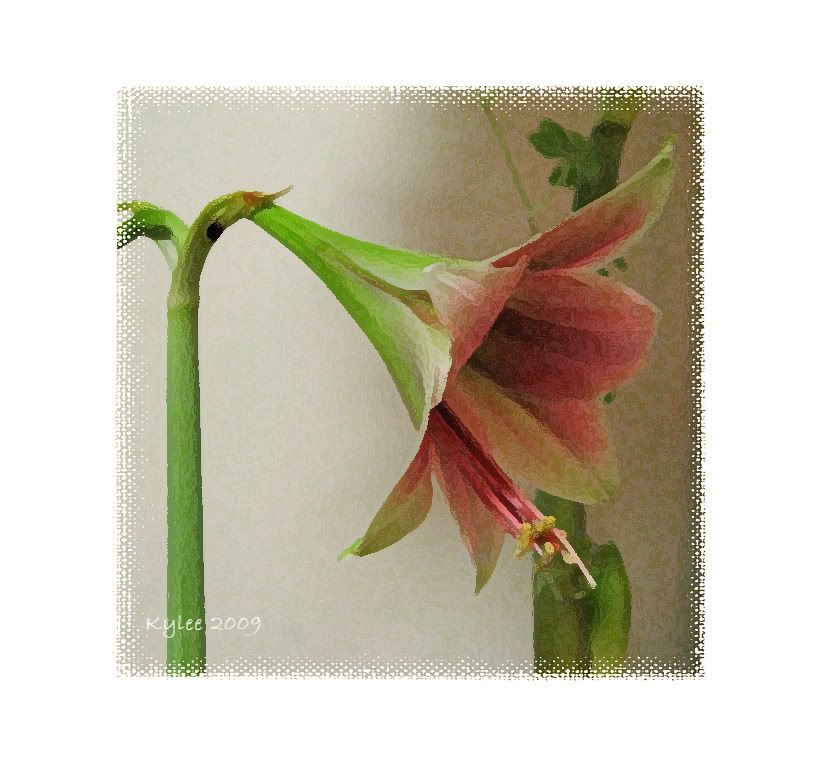



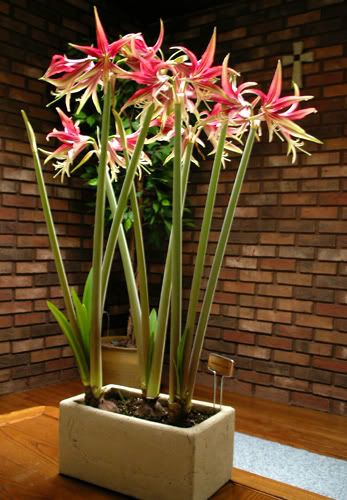



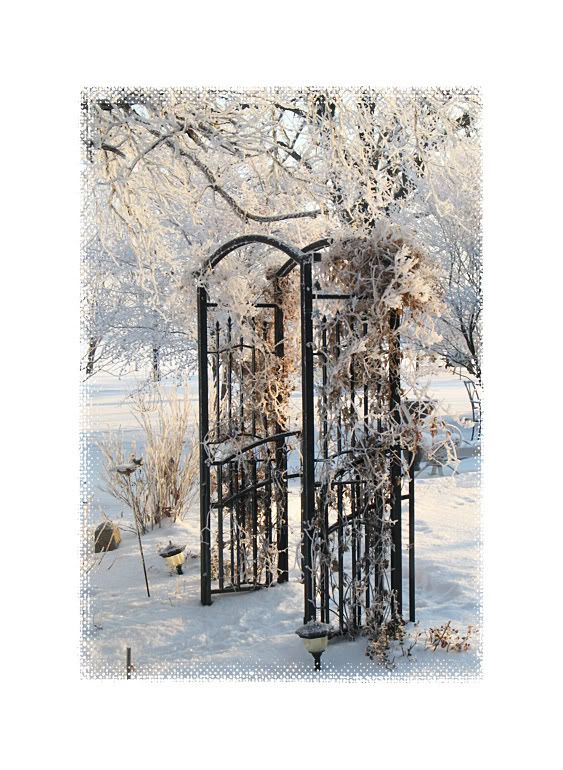
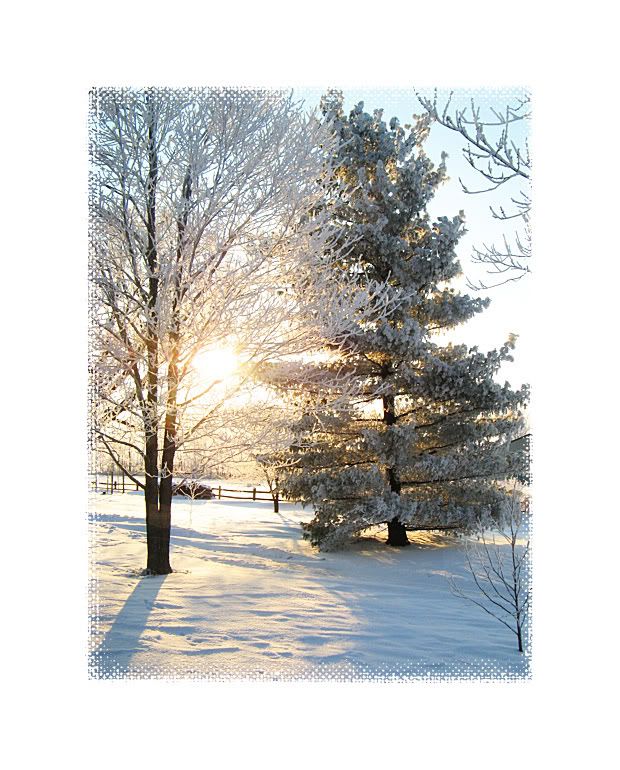
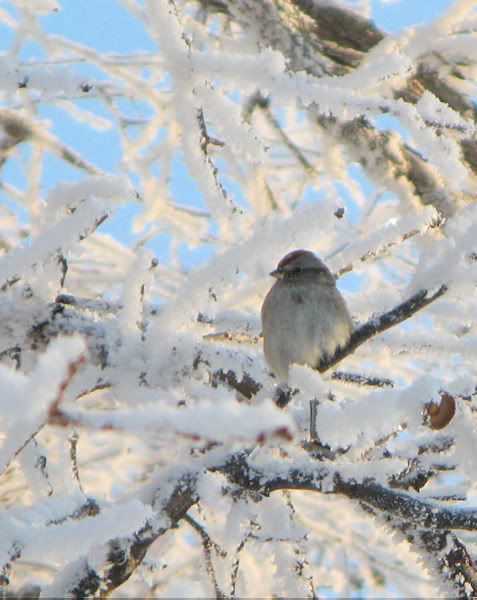
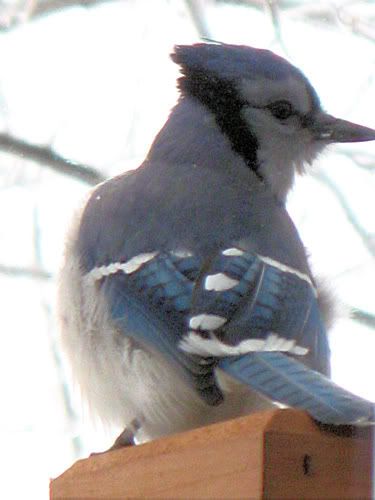
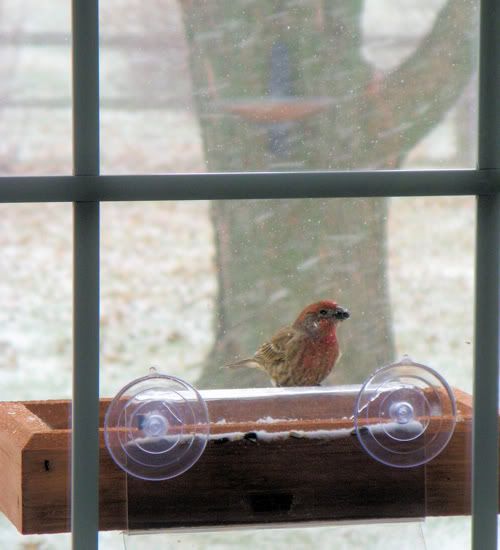
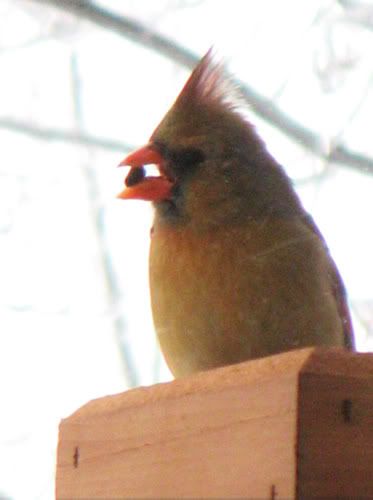
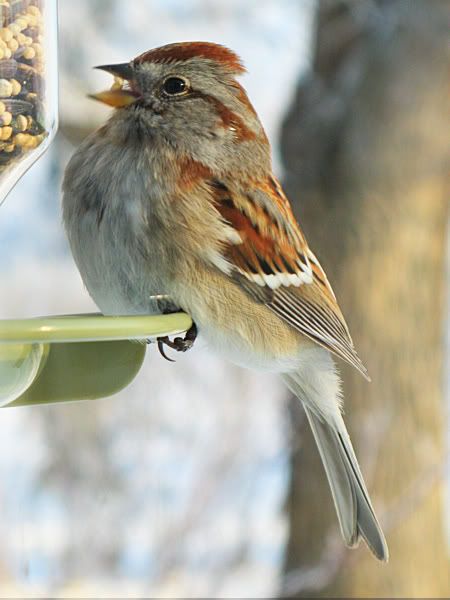
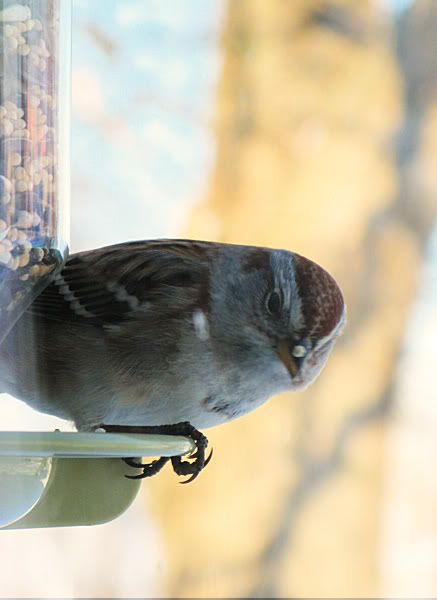









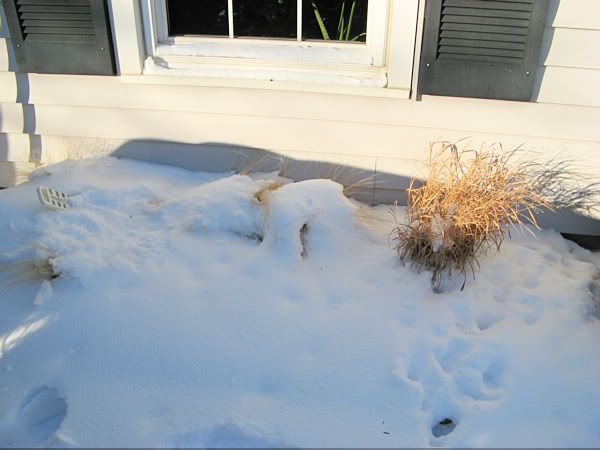
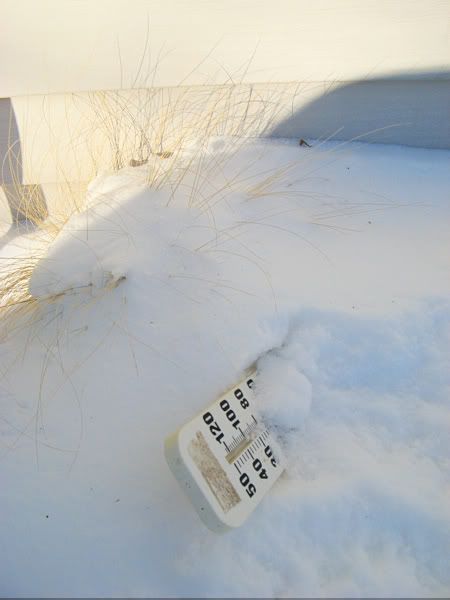
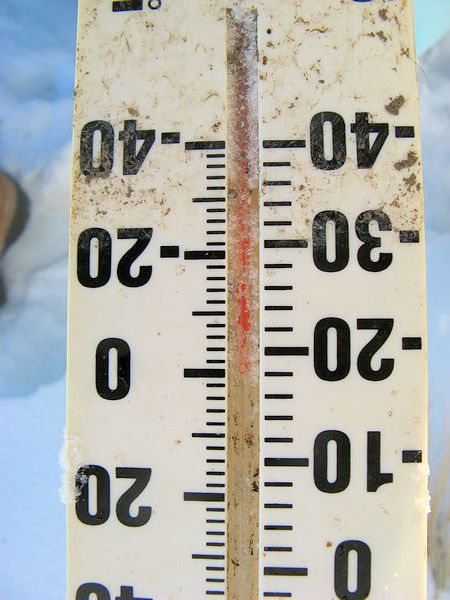







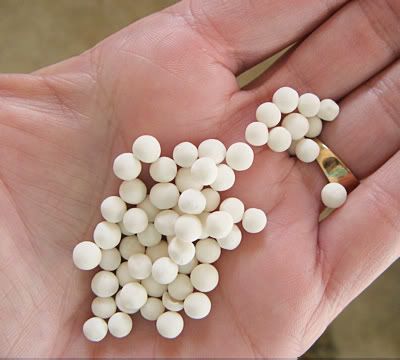
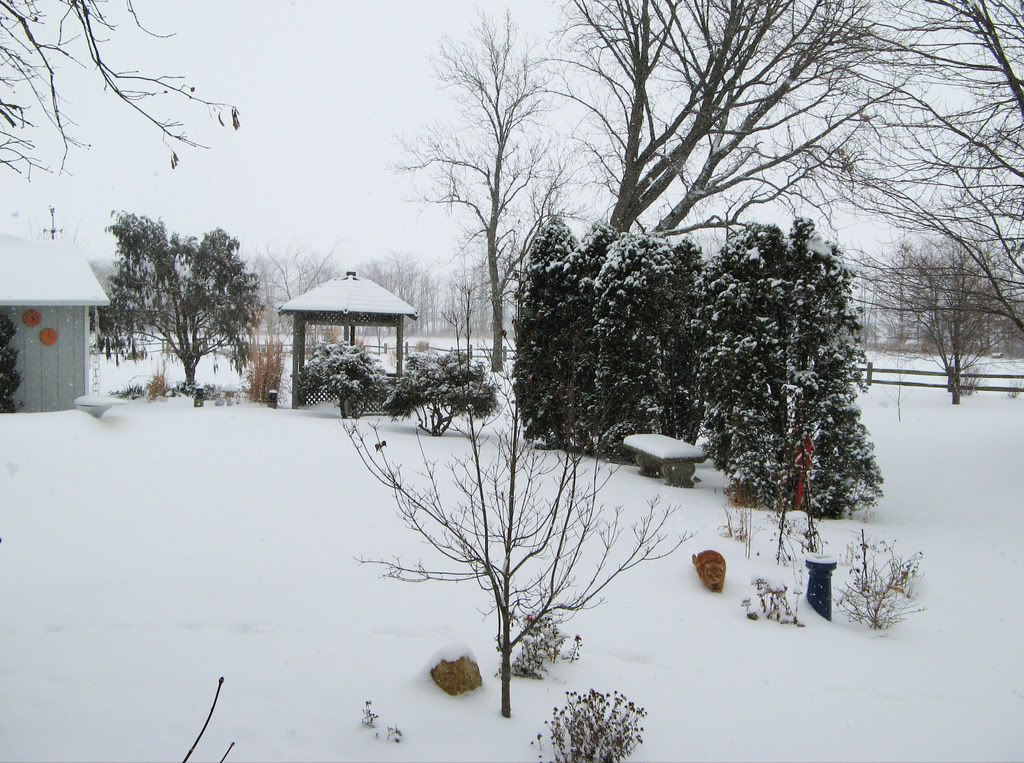
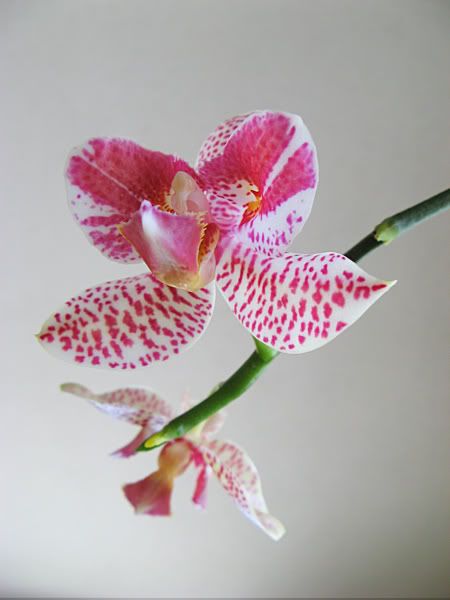

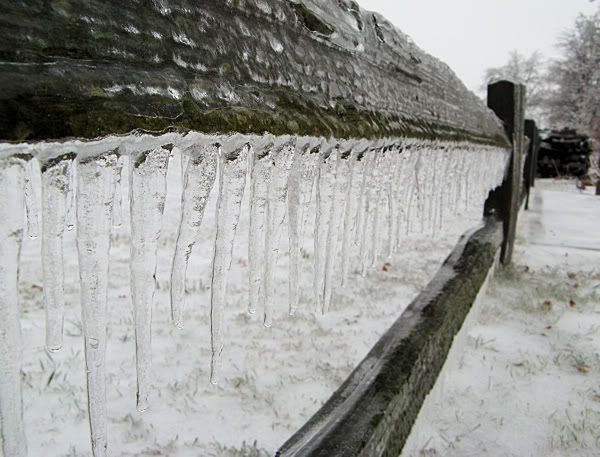
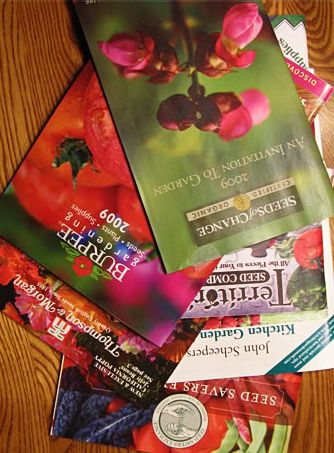
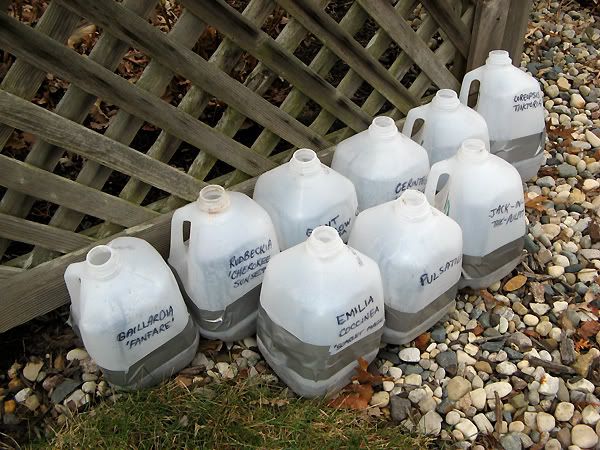
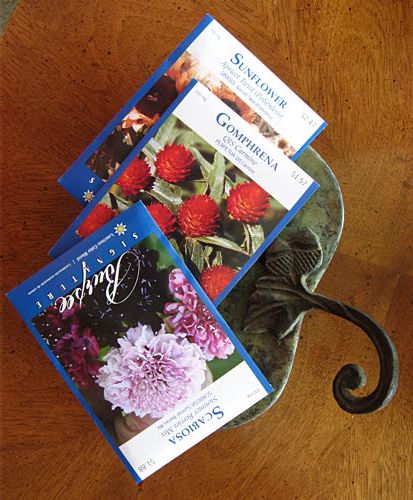

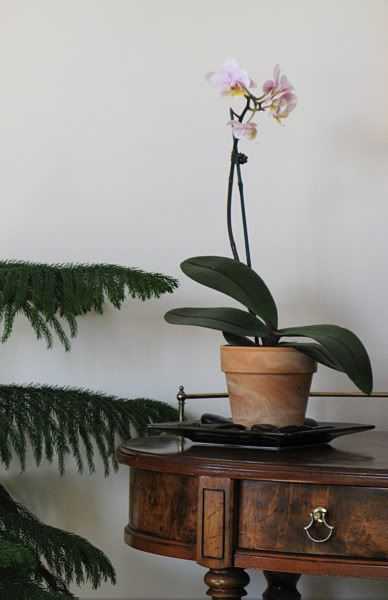
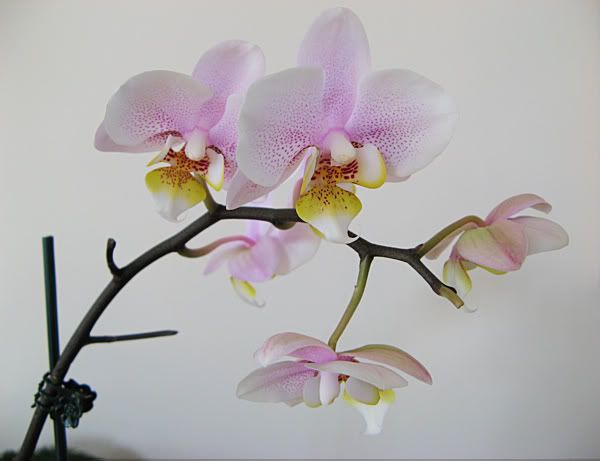


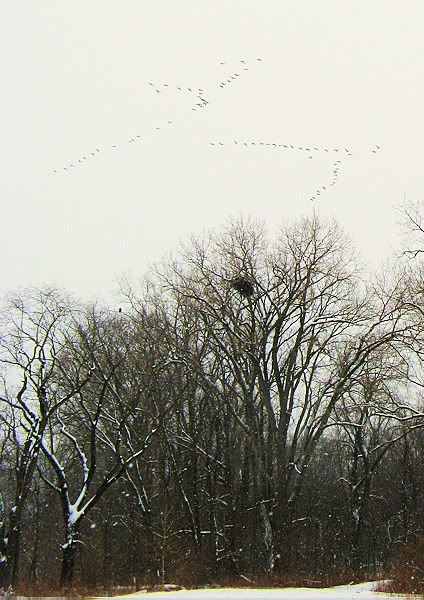
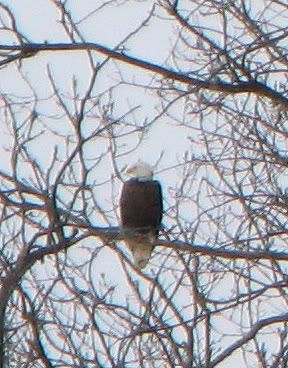








 "Bejeweled"
"Bejeweled"


